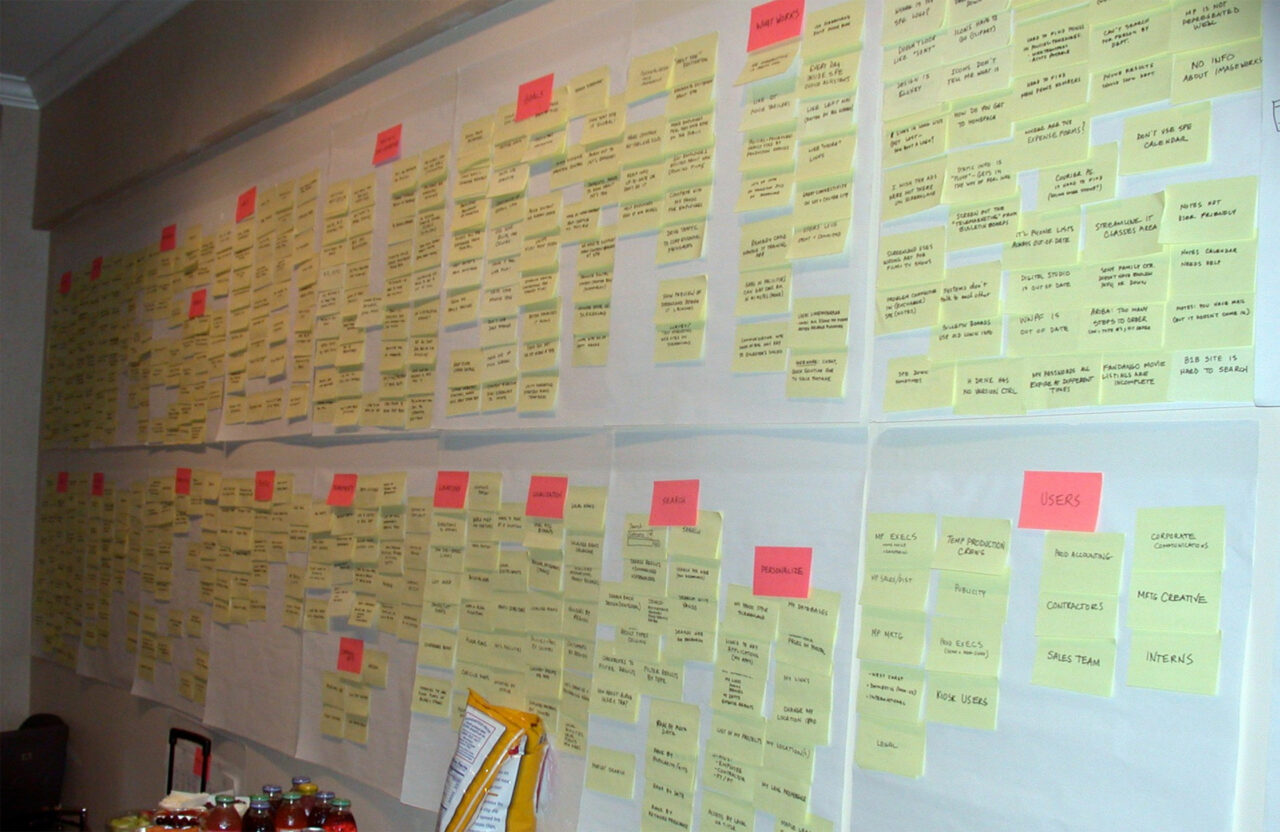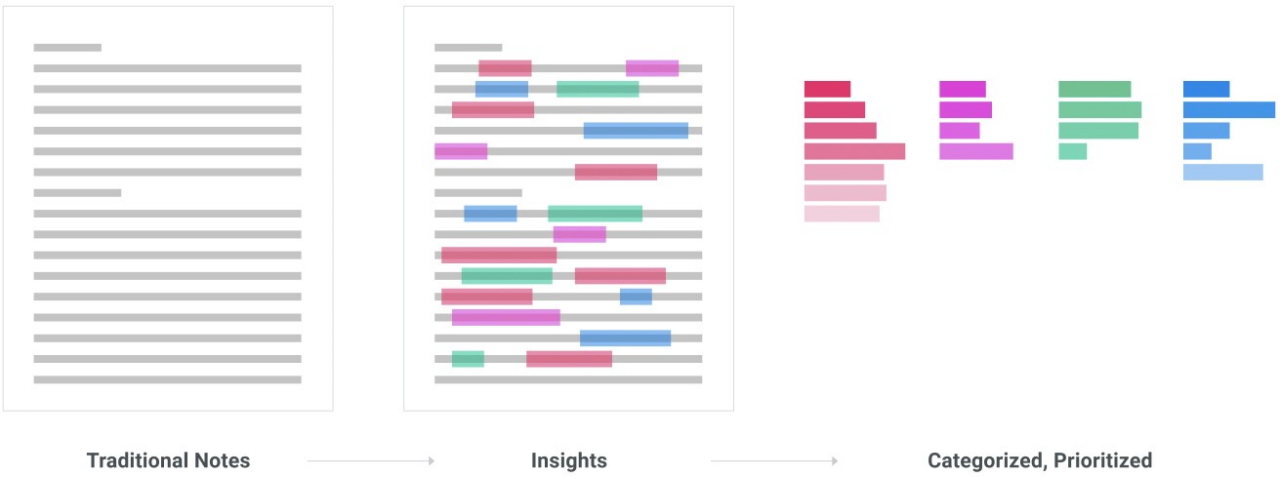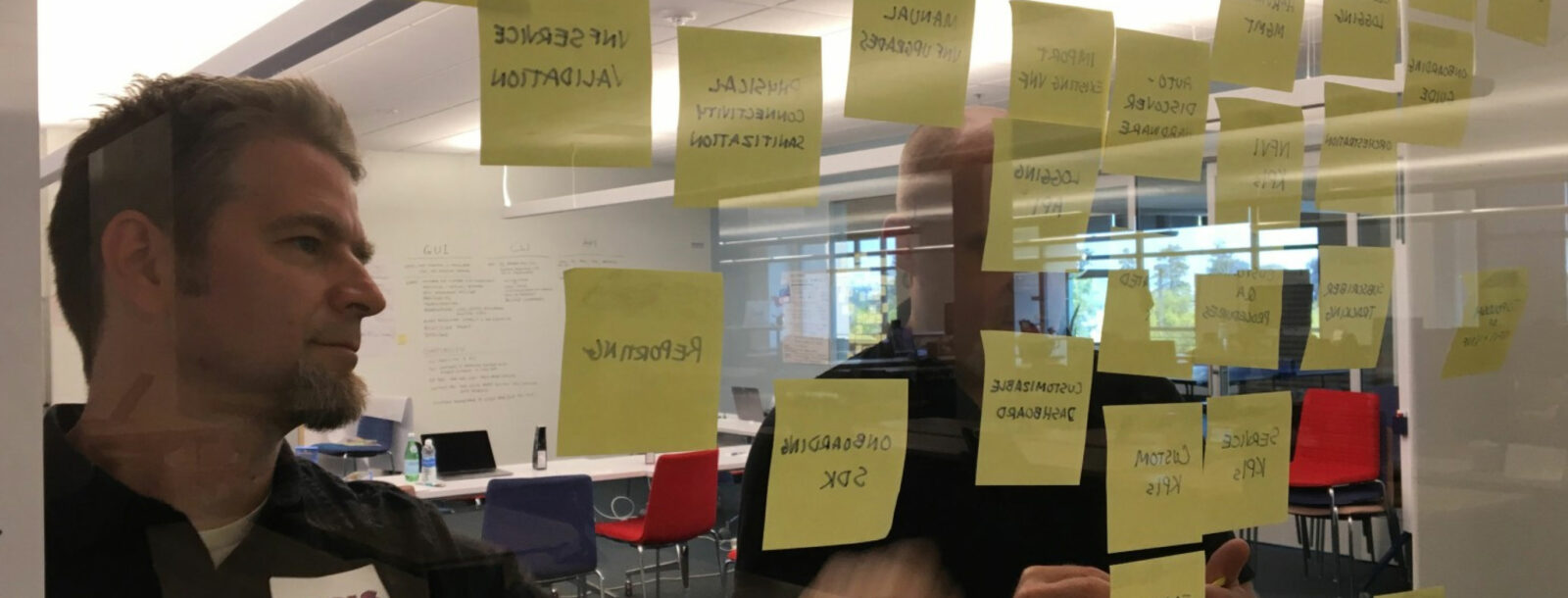We’ve encountered countless digital product owners that struggle with the same things:
- Sifting through notes trying to find something
- Struggling to keep track of everything they’ve read (much less what other team members read)
- Turning a huge pile of research into a product that considers it all
We’ve struggled with these things too. It’s hard. We needed a new approach.
The answer? Insight-based research.
It’s basically a fancy term for taking notes in a spreadsheet. Sounds crazy, right? Well, there’s a method to this madness.
At a high level, insight-based research is a technique for proactively listening for the right kind of notes. And then writing them down in bite-sized pieces called insights. These insights are then organized into patterns that are hard to pull out of plain old prosaic notes. Once collected and organized, the patterns of insights are processed into deliverables that result in a successful digital product, like clockwork.
We’ve been creating digital products this way for years now, and the insight-based research approach has become an integral part of the digital product design process. Why? Because it’s a reliable way of organizing a mess of information. In fact, one of our friends calls it “sense-making.”
Humble Beginnings
To truly understand the value of this process (and, in turn, create a successful digital product), it’s important to understand how it came about.
Our process evolved out of the traditional card sort exercise. We used Post-It Notes to explore prioritization and grouping of website features in our workshops with clients. The “insight” format (a word or short phrase) came about because that’s all we could fit on a Post-It Note. The walls of a typical client workshop looked like this:

This method turned out to be useful for the other aspects of our research. Rather than taking traditional prosaic notes, we began just capturing directly to Post-It Notes during interviews, meetings, background reading and competitor reviews.
Let’s just say we were huge customers of 3M’s magical little stickies 😆. In a typical project, our team would capture thousands of insights, so you can see how the physical aspects get really unwieldy. And it uses a lot of paper.
Speaking of that, one time I was preparing a workshop for Paramount Studios, and I had to walk across a parking lot with all the Post-It boards. Normally this would be fine, but it was raining with 30-mph winds 😣. I had put trash bags over the boards, but regardless Post-It Notes were flying out!
We decided to migrate this process to Excel, where each insight was captured in a single cell of a spreadsheet rather than a Post-It Note stuck to a poster board. The benefit of using a spreadsheet is we could categorize and prioritize the insights using spreadsheet functionality. And we wouldn’t lose any more insights in the wind 😆.
Another benefit of the spreadsheet is it allowed us to capture other notes about an insight in adjacent columns, such as the source of the information and who documented it. Nowadays, we do this in Google Sheets so multiple people could work simultaneously.
The Present-Day Insight
Although we’ve graduated to Google Sheets these days, an insight is still a Post-It-sized piece of information that you gather during research. It should be a single word or a short phrase, no longer. And it should be a type of information that you consciously decide ahead of time that you would like to collect. Some examples include:
- an application feature
- an audience segment
- a brand attribute
- a competitor
- a pain point
The goal is to be able to categorize these insights and even quantify their importance by how many times they came up in the research. This gives a comprehensive yet distilled story from a team of researchers.

We still take traditional notes and often record interviews, but these captures are more for reference when we need clarity on the context of an insight. The insight format makes the information much more accessible. Here are some examples:

What are insights used for?
The insights have been collected and sorted – now what? There’s no point in doing research if you can’t summarize it, communicate it and most importantly, apply the learnings from it. So the next step is turning insights into a set of deliverables.
As shown in the image below, the insights are THE KEY to turning the pile of research into useful deliverables. From the insights comes everything else (personas, feature matrix, creative brief, etc.). Think of the insights as raw material that is later used to build everything that comes next. Here’s how it flows for us:

For example, we need to create personas. To do so, we listen for “raw materials” in the research phase that will help us build the personas – audiences, pain points and goals. The same goes for the feature matrix – here we listen for feature and content ideas. If a feature was mentioned 19 times, it has more weight than a feature mentioned 3 times. For the creative brief, we’re listening for brand attributes, competitors, differentiators and design considerations. Get the idea?
Conclusion
Insight-based research is a reliable process for making sense of a mess of research. It means better products that align better with goals and needs. It means high-quality digital products that get results, like clockwork. Whatever your digital product goals are, if you do this process right, you’ll achieve your goals – make more sales, increase adoption, get acquired, etc.
Questions about this process? Got research techniques that have worked well for you? We’d love to hear from you. Leave a comment below.
Need expert research? Feel free to let us know.
#userexperience #ux #research #primitivespark










